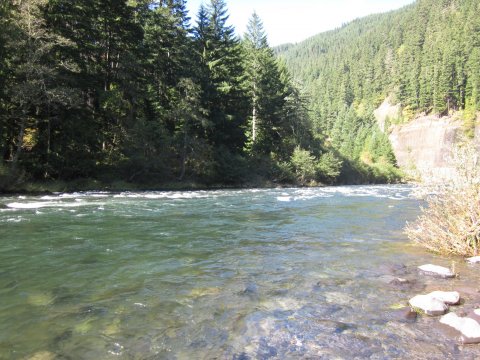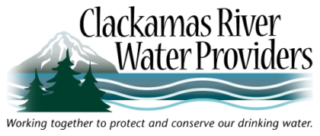Emergency Preparedness
If an earthquake, winter storm, or other disaster strikes our community, you may not have access to food and water for days or even weeks. Take time now to prepare for yourself and your family. The most important thing you can do to prepare for an emergency is to plan ahead and have essential emergency supplies on hand.
Having an ample supply of WATER is a top priority in an emergency. You can live for weeks without food, but without water, you can die in as little as 3 days. Help your water provider, emergency responders and other relief organizations help you by having an adequate emergency supply of water, food and other essentials.
You will need to store at least one gallon per person per day. According to the Red Cross and FEMA, you should store at least a two week supply (14 days) of water for each member of your family. A minimum three-day supply is essential. Don’t forget to store additional supplies for your pets.
In an emergency, drink at least 2 quarts of water a day, 3 to 4 quarts a day if you are in a hot climate, pregnant, sick, or a child. If supplies run low, don’t ration water: Drink the amount you need today and look for more tomorrow.
How and Where to Store Water
In a cool, dark place in your home, each vehicle, and your workplace.
Preferably in store-bought, factory-sealed water containers.
Alternately, in food-grade-quality containers made for storing water and available from sporting goods and surplus stores and other retailers. These containers must be thoroughly washed, sanitized, and rinsed.
Emergency Water Sources
Indoor Safe Sources
- Melted ice cubes
- Water drained from the water heater (if the water heater has not been damaged)
- Liquids from canned goods such as fruit or vegetable juices
- Water drained from pipes
Unsafe Sources
- Radiators
- Hot water boilers (home heating system)
- Water beds (fungicides added to the water or chemicals in the vinyl may make water unsafe to use)
- Water from the toilet bowl or flush tank
- Swimming pools and spas (chemicals used to kill germs are too concentrated for safe drinking but can be used for personal hygiene, cleaning, and related uses)
If you need to find water outside your home, try—
- Rainwater
- Streams, rivers, and other moving bodies of water
- Ponds and lakes
- Natural springs

Treat all water of uncertain quality before using it for drinking, food washing or preparation, washing dishes, brushing teeth, or making ice. In addition to having a bad odor and taste, contaminated water can contain microorganisms (germs) that cause diseases such as dysentery, cholera, typhoid, and hepatitis.
There are many ways to treat water. None is perfect. Often the best solution is a combination of methods. Before treating, let any suspended particles settle to the bottom or strain them through coffee filters or layers of clean cloth. These instructions are for treating water of uncertain quality in an emergency situation, when no other reliable clean water source is available, or you have used all of your stored water.
Boiling
Boiling is the safest method of treating water. In a large pot or kettle, bring water to a rolling boil for 1 full minute, keeping in mind that some water will evaporate. Let the water cool before drinking.
Boiled water will taste better if you put oxygen back into it by pouring the water back and forth between two clean containers. This also will improve the taste of stored water.
Chlorination
You can use household liquid bleach to kill microorganisms. Use only regular household liquid bleach that contains 5.25 to 6.0 percent sodium hypochlorite. Do not use scented bleaches, color safe bleaches, or bleaches with added cleaners. Because the potency of bleach diminishes with time, use bleach from a newly opened or unopened bottle.
Add 16 drops (1/8 teaspoon) of bleach per gallon of water, stir, and let stand for 30 minutes. The water should have a slight bleach odor. If it doesn’t, then repeat the dosage and let stand another 15 minutes. If it still does not smell of chlorine, discard it and find another source of water.
Distillation
While the two methods described above will kill most microbes in water, distillation will remove microbes (germs) that resist these methods, as well as heavy metals, salts, and most other chemicals. Distillation involves boiling water and then collecting only the vapor that condenses. The condensed vapor will not include salt or most other impurities. To distill, fill a pot halfway with water. Tie a cup to the handle on the pot’s lid so that the cup will hang right-side-up when the lid is upside-down (make sure the cup is not dangling into the water) and boil the water for 20 minutes. The water that drips from the lid into the cup is distilled.
For more information on what other water providers in the Portland metro region are doing, as well as regional preparedness and personal preparedness efforts visit the Regional Water Providers Consortium webpage at https://www.regionalh2o.org/water-providers-emergency-preparedness
The links below provide resources and information on how to prepare as well as local contact information regarding emergencies.
- Ready.gov This website offers excellent advice for utilizing water supplies in your home from your water pipes, water heater and other sources and how to safely treat water.
- Red Cross – good information on how to prepare for an emergency and what you should have on hand.
- Clackamas County Public Alerts – opt-in to receive critical emergency messaging via email, phone call and text during times of disaster.
- Preparedness 101: Zombie Pandemic – CDC has a fun new way of teaching the importance of emergency preparedness.
![]()
Adult Presentations
![]()
Resource & Documents
![]()
Watershed Tour
![]()
